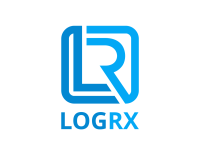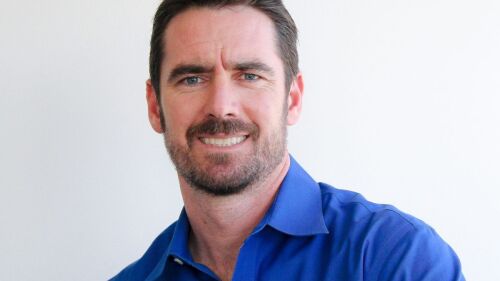No matter how well run your EMS organization may be, audits around controlled substances can be scary experiences. Managing medications is a complicated challenge with lots of moving parts, and even for inadvertent violations, the penalties can be substantial.
With the opioid epidemic raging onward and dangerous, divertible drugs harming and killing users, EMS leaders face more pressure than ever to run their ships tightly, with a close eye on the narcotics they administer and how they’re tracked, stored and destroyed. For years the best way to accomplish that was manually on a clipboard – a process that, despite everyone’s best efforts, was slow, susceptible to errors and vulnerable to falsification in the hands of bad actors.
Drug tracking has come a long way. The easy-to-use app-based platform offered by now allows precise management of every aspect of an organization’s medication handling, from administrative oversight to delivery in the field.
Here are five ways the LogRx system supports accountability and helps protect EMS agencies when they face audits.
1. Simplified operations
You can’t expect busy providers to engage in slow, cumbersome processes every time they restock drugs or administer one to a patient. Any system for tracking what’s stocked and administered must be fast, easy and convenient, or it won’t be fully embraced.
Scanning a QR code is about as fast as it gets. That’s the LogRx system’s mechanism for inventory checks, administrations and transfers: Every box and vial has its unique identifier on a durable seal, and providers initiate use with a quick scan on their mobile device (Apple or Android). They note their intended activity (administration, transfer or disposal) and confirm their dosage, and each action is recorded, time-stamped and linked to the provider doing it, with its location recorded by GPS.
At the command level, an provides a streamlined big-picture overview that shows inventories in the field and reserve, expiration dates and par levels, historical use and waste, and the times and locations of all drug activity, as well as recent system users. A patent-pending biometrics face and fingerprint ID system controls access and prevents unauthorized use and provides verification of narcotic activity, mandated by the DEA.
2. A granular view
EMS agencies’ responsibilities around controlled substances were most recently codified in the of 2017. This updated the Controlled Substances Act’s (CSA’s) omission of EMS among the medical providers who handle such drugs.
It requires a few things:
- Agencies giving controlled substances must register with the DEA.
- They can give Schedule II–V controlled substances outside the presence of a medical director or authorizing professional if permitted by state law and with a standing or verbal order.
- They can store controlled substances in vehicles and unregistered locations as well as registered locations but must give the U.S. government 30 days’ advance notice of unregistered locations.
- EMS vehicles can be restocked at hospitals without completing CSA order forms.
- CSA recordkeeping requirements still apply, including recording all deliveries and retaining records where such substances are received, administered and discarded.
- Under the supervision of medical control, EMS agencies are now liable for ensuring the appropriate use, maintenance, reporting and security of the controlled substances they use.
In short, this update in 2017 put a lot more responsibility on the EMS providers themselves. Obviously, knowing the precise location of every dose of every drug at any given time – as well as when, where and by whom each dose is given – will be more protective to an EMS organization than referring to manual logs of questionable accuracy.
While there are , being able to trace the life of every controlled substance from acquisition to disposition can help agencies show individual and organizational compliance with not only federal regulations but relevant state and local laws and industry best practices.
3. An informed perspective
LogRx isn’t a hospital solution or square-peg answer from elsewhere in health care adapted for the round hole of EMS. It’s purpose-built from an experienced industry perspective to assist EMTs, paramedics and other medical professionals with their particular needs and pain points and designed to make their job easier and more efficient.
Company founder and CEO Clive Savacool is a retired fire chief and veteran paramedic who worked with numerous fire and EMS organizations in California over a 25-year career in the field. He witnessed both the perils of manual drug tracking and the initial attempts to bring the process online in the early aughts. Both efforts left a bit to be desired.
“The department I was with at the time had a couple of diversions, prompting a move to a digital spreadsheet platform,” said Savacool, a battalion chief at the time. “There weren’t any good commercial options then, and it was better than pen and paper, but it still had some shortfalls.”
Even with the new system, checking narcotics meant just marking a box attesting they were there. “Sometimes guys filled that out as soon as they came on duty, before they even looked at the narcotics,” Savacool recalled.
Having already developed an app to help firefighters track their toxic exposures, Savacool heard often about a need for something similar for narcotics. He teamed up with cofounder Skye Thompson, now LogRx’s COO, to create a focused, informed solution and company to provide it. Trade shows helped spark some initial interest, and connections and positive word of mouth helped spread it.
LogRx has kept its product singularly focused (though it will release new modules later this year to assist tracking other items, like medical supplies, equipment, personal protective equipment and vehicle checks). Some narcotics-tracking platforms are part of larger suites that have other components beyond just monitoring medications. Those can sacrifice quality compared to a full focus on controlled substances – one of an EMS organization’s most important responsibilities – and present more to go wrong. “LogRx was created to track narcotics, not as a supplemental add-on,” noted LogRx Marketing Director Kristen Simoes.
With LogRx, when providers are working with controlled substances, that’s all they’re doing – their focus can remain on that, reducing the risk of error and enhancing regulatory compliance.
4. Less waste, less diversion
The diversion of controlled substances is a big enough problem that the DEA’s Diversion Control Division has a for that topic alone. The tamper precautions and zoomed-in level of tracking allowed by LogRx combat the diversion risk effectively, and the end-to-end picture and alerting it provides help prevent waste.
“Diversion is the biggest danger” facing EMS organizations handling narcotics, Savacool said. “Having an inexpensive drug expire on the shelf isn’t the end of the world. But having a lethal drug disappear is much more serious.”
The real cause of diversion, LogRx notes, is : “When people have easy access to controlled substances, the temptation to divert, steal and sell (or use) the drugs becomes too high,” the company noted in a 2023 blog. “The key to preventing drug diversion is to put stopgap measures in place by running tight tracking and reporting procedures.”
5. Doing the right thing
We’ve all seen leadership that didn’t practice what it preached. That inevitably spills over into followers who don’t value the mission and doing things correctly. Conversely, leaders who model and reinforce preferred behavior motivate comparable actions in their followers far more effectively.
Thus, speaking about the importance of drug tracking is helpful – but embracing a comprehensive approach to medication management and living it every day demonstrates a seriousness that can trickle down. If you , they’ll treat it as important. In the face of audits and other public scrutiny, showing you’re trying to do the right thing matters.
“If you just give somebody these lethal and addictive drugs with a pen and sheet of paper and say, ‘OK, keep track of things,’ how important is it going to be to them?” said Savacool. “Or you can say, ‘Here’s an app that will track every activity you do with these drugs, and even the GPS location, so make sure you’re mindful of it.’ It’s a completely different level of importance when a manager gives them a tool with that level of security. Your staff is willing to take something as seriously as you do.”
The use of pen and paper has essentially become a normalization of deviance. It’s common practice for EMS professionals simply because they’ve always done it that way. But with the accessibility of digital tracking platforms such as LogRx, there is no excuse to not take advantage of technology. Using pen and paper is like driving without a seat belt: You’re fine until something goes wrong, and then it’s too late to correct it.
When it comes time for an audit, that’s not a good position to be in.
For more information, visit .

















